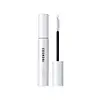What's inside
What's inside
 Key Ingredients
Key Ingredients

 Benefits
Benefits

 Concerns
Concerns

 Ingredients Side-by-side
Ingredients Side-by-side

Water
Skin Conditioning1,2-Hexanediol
Skin ConditioningButylene Glycol
HumectantPentylene Glycol
Skin ConditioningCentella Asiatica Extract
CleansingPortulaca Oleracea Extract
Skin ConditioningHouttuynia Cordata Extract
Skin ConditioningSodium Hyaluronate
HumectantHydroxyethylcellulose
Emulsion StabilisingSodium Carbomer
Emulsion StabilisingPropanediol
SolventEthylhexylglycerin
Skin ConditioningDisodium EDTA
Disodium Phosphate
BufferingPolysorbate 60
EmulsifyingSodium Phosphate
BufferingTocopherol
AntioxidantGlycerin
HumectantHydroxyacetophenone
AntioxidantMyristoyl Pentapeptide-17
Skin ConditioningCopper Tripeptide-1
Skin ConditioningCaprylyl Glycol
EmollientBenzoic Acid
MaskingSodium Benzoate
MaskingWater, 1,2-Hexanediol, Butylene Glycol, Pentylene Glycol, Centella Asiatica Extract, Portulaca Oleracea Extract, Houttuynia Cordata Extract, Sodium Hyaluronate, Hydroxyethylcellulose, Sodium Carbomer, Propanediol, Ethylhexylglycerin, Disodium EDTA, Disodium Phosphate, Polysorbate 60, Sodium Phosphate, Tocopherol, Glycerin, Hydroxyacetophenone, Myristoyl Pentapeptide-17, Copper Tripeptide-1, Caprylyl Glycol, Benzoic Acid, Sodium Benzoate
Water
Skin ConditioningGlycerin
Humectant1,2-Hexanediol
Skin ConditioningPanthenol
Skin ConditioningPolyglyceryl-4 Caprate
EmulsifyingAmmonium Acryloyldimethyltaurate/Vp Copolymer
Xanthan Gum
EmulsifyingArginine
MaskingMorus Alba Leaf Extract
Skin ConditioningBiotin
AntiseborrhoeicCarbomer
Emulsion StabilisingEthylhexylglycerin
Skin ConditioningDisodium EDTA
Morus Alba Flower Extract
Musa Nana Fruit Extract
Skin ConditioningCitrus Limon Fruit Extract
MaskingMacrocystis Pyrifera Extract
Skin ConditioningButylene Glycol
HumectantEcklonia Cava Extract
Skin ConditioningChrysanthemum Indicum Extract
AntioxidantGelidium Cartilagineum Extract
Skin ProtectingHibiscus Hamabo Extract
HumectantPropanediol
SolventSodium Hyaluronate Crosspolymer
HumectantHydrolyzed Glycosaminoglycans
HumectantCaprylyl Glycol
EmollientSodium Hyaluronate
HumectantBenzyl Glycol
SolventHydrolyzed Hyaluronic Acid
HumectantHyaluronic Acid
HumectantRaspberry Ketone
MaskingWater, Glycerin, 1,2-Hexanediol, Panthenol, Polyglyceryl-4 Caprate, Ammonium Acryloyldimethyltaurate/Vp Copolymer, Xanthan Gum, Arginine, Morus Alba Leaf Extract, Biotin, Carbomer, Ethylhexylglycerin, Disodium EDTA, Morus Alba Flower Extract, Musa Nana Fruit Extract, Citrus Limon Fruit Extract, Macrocystis Pyrifera Extract, Butylene Glycol, Ecklonia Cava Extract, Chrysanthemum Indicum Extract, Gelidium Cartilagineum Extract, Hibiscus Hamabo Extract, Propanediol, Sodium Hyaluronate Crosspolymer, Hydrolyzed Glycosaminoglycans, Caprylyl Glycol, Sodium Hyaluronate, Benzyl Glycol, Hydrolyzed Hyaluronic Acid, Hyaluronic Acid, Raspberry Ketone
 Reviews
Reviews

Ingredients Explained
These ingredients are found in both products.
Ingredients higher up in an ingredient list are typically present in a larger amount.
1,2-Hexanediol is a synthetic liquid and another multi-functional powerhouse.
It is a:
- Humectant, drawing moisture into the skin
- Emollient, helping to soften skin
- Solvent, dispersing and stabilizing formulas
- Preservative booster, enhancing the antimicrobial activity of other preservatives
Butylene Glycol (or BG) is used within cosmetic products for a few different reasons:
Overall, Butylene Glycol is a safe and well-rounded ingredient that works well with other ingredients.
Though this ingredient works well with most skin types, some people with sensitive skin may experience a reaction such as allergic rashes, closed comedones, or itchiness.
Learn more about Butylene GlycolCaprylyl Glycol is a humectant and emollient, meaning it attracts and preserves moisture.
It is a common ingredient in many products, especially those designed to hydrate skin. The primary benefits are retaining moisture, skin softening, and promoting a healthy skin barrier.
Though Caprylyl Glycol is an alcohol derived from fatty acids, it is not the kind that can dry out skin.
This ingredient is also used as a preservative to extend the life of products. It has slight antimicrobial properties.
Learn more about Caprylyl GlycolDisodium EDTA plays a role in making products more stable by aiding other preservatives.
It is a chelating agent, meaning it neutralizes metal ions that may be found in a product.
Disodium EDTA is a salt of edetic acid and is found to be safe in cosmetic ingredients.
Learn more about Disodium EDTAEthylhexylglycerin (we can't pronounce this either) is commonly used as a preservative and skin softener. It is derived from glyceryl.
You might see Ethylhexylglycerin often paired with other preservatives such as phenoxyethanol. Ethylhexylglycerin has been found to increase the effectiveness of these other preservatives.
Glycerin is already naturally found in your skin. It helps moisturize and protect your skin.
A study from 2016 found glycerin to be more effective as a humectant than AHAs and hyaluronic acid.
As a humectant, it helps the skin stay hydrated by pulling moisture to your skin. The low molecular weight of glycerin allows it to pull moisture into the deeper layers of your skin.
Hydrated skin improves your skin barrier; Your skin barrier helps protect against irritants and bacteria.
Glycerin has also been found to have antimicrobial and antiviral properties. Due to these properties, glycerin is often used in wound and burn treatments.
In cosmetics, glycerin is usually derived from plants such as soybean or palm. However, it can also be sourced from animals, such as tallow or animal fat.
This ingredient is organic, colorless, odorless, and non-toxic.
Glycerin is the name for this ingredient in American English. British English uses Glycerol/Glycerine.
Learn more about GlycerinPropanediol is an all-star ingredient. It softens, hydrates, and smooths the skin.
It’s often used to:
Propanediol is not likely to cause sensitivity and considered safe to use. It is derived from corn or petroleum with a clear color and no scent.
Learn more about PropanediolSodium Hyaluronate is hyaluronic acid's salt form. It is commonly derived from the sodium salt of hyaluronic acid.
Like hyaluronic acid, it is great at holding water and acts as a humectant. This makes it a great skin hydrating ingredient.
Sodium Hyaluronate is naturally occurring in our bodies and is mostly found in eye fluid and joints.
These are some other common types of Hyaluronic Acid:
Learn more about Sodium HyaluronateWater. It's the most common cosmetic ingredient of all. You'll usually see it at the top of ingredient lists, meaning that it makes up the largest part of the product.
So why is it so popular? Water most often acts as a solvent - this means that it helps dissolve other ingredients into the formulation.
You'll also recognize water as that liquid we all need to stay alive. If you see this, drink a glass of water. Stay hydrated!
Learn more about Water